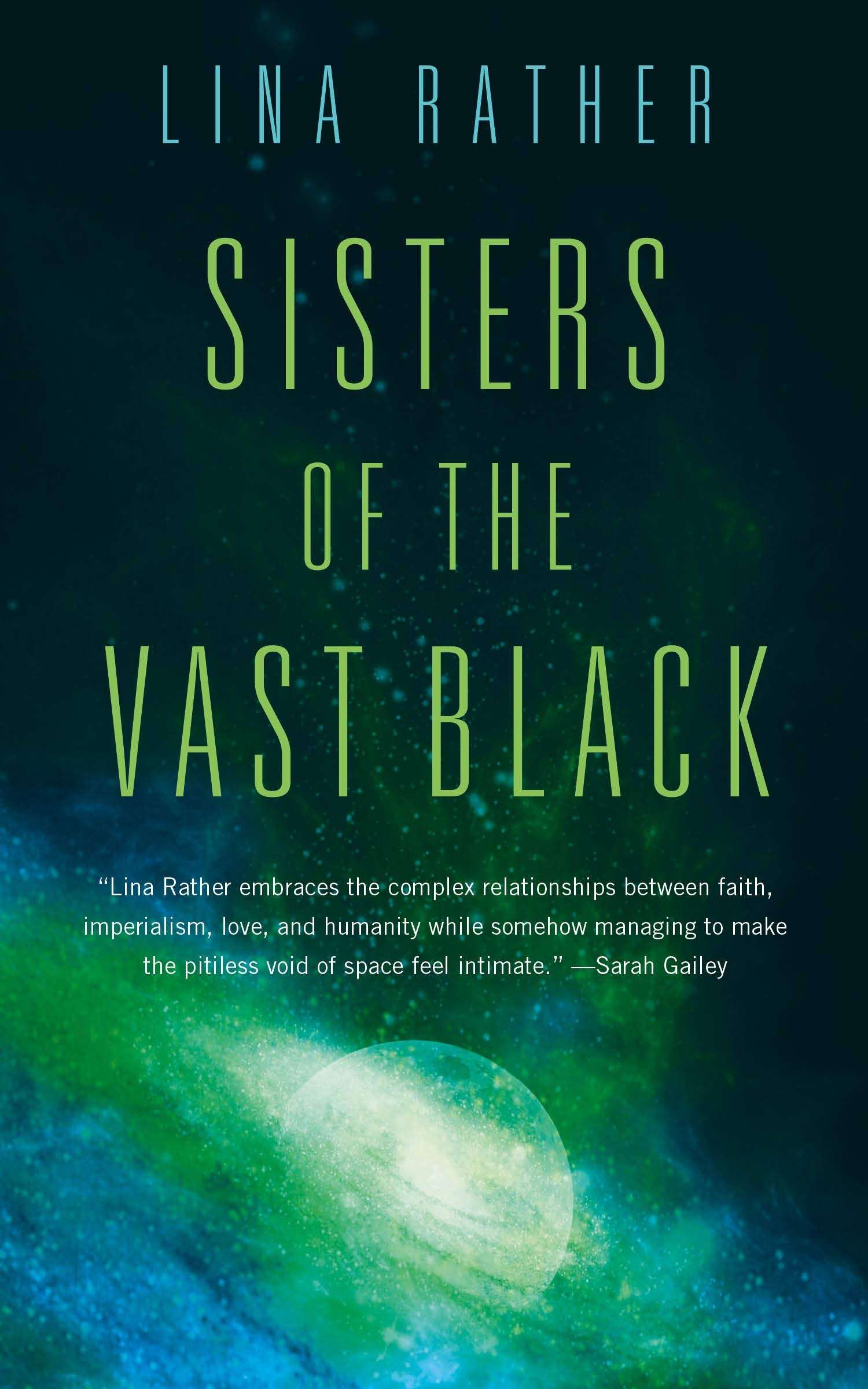Sisters of the Vast Black, by Lina Rather
I always get nervous when I pick up a book where conventional religion is center stage. Having grown up in a religious family, I’ve seen the best and the worst of denominationalized churches. So when I read that Sisters of the Vast Black centered around nuns in space, I was, in a word, dubious.
I need not have been. Lina Rather’s short novel is indeed centered around an apostolic sisterhood, but set in the far future, aboard the living ship Our Lady of Impossible Constellations. This is a benevolent order, traveling to remote colonies and trading posts offering medicine, marriages, baptisms and other rites to those in need, in aloof deference to the political hierarchy of the Church.

For the sisters of Our Lady of Impossible Constellations live in a universe that has been splintered and traumatized by war, manmade catastrophe, power-mongering and greed (in other words, the usuals). While the tyrannical Earth Central Governance was defeated by rebellion decades ago, there are signs that it is slyly regaining fingerholds of control – and there is suspicion that the current Papacy is complicit with its efforts. Our sisters are determined to not be a part of that political chicanery.
But while the subtly subversive actions of a few are intriguing, and the science – and compassion – surrounding the living ship are fascinating, while the questions of faith and belief and conviction are involving, it is the sisters themselves as human emissaries that are the true beauty of this novel. Kindhearted Sister Gemma, forthright Sister Ewostatewos, staunch Sister Varvara, nurturing Sister Lucia, dogmatic Mary Catherine, brusque Sister Faustina – they all have facets to their characters that make them human beyond their calling, that speak to their reason for joining the order but say far more than that simple distillation of purpose. I found the elderly Mother Superior to be especially compelling, a woman in decline whose growing frailty threatens to unearth a darkness she has borne in secret for decades.
How author Lina Rather can pack so much in 162 pages without sacrificing context or nuance is simply amazing. Those who enjoy singular science can be captivated by the environment of the living ship (and those who enjoy philosophy can be caught up in the arguments about its status), while those who appreciate sensuous detail can revel in moments such as the sisters’ trip to the new colony on Phoyongsa III. There is intrigue, there is mystery, there is action, there is tenderness. And yes, religion is integral to the story, but sans the sermons or the judgements.
It’s a lovely, lovely read. And while the book comes to a satisfying conclusion, I am stoked to see that there is a follow-up in the works, Sisters of the Forsaken Stars, set to drop in February of next year. If it’s even partially as successful as Sisters of the Vast Black, it is definitely something to look forward to.
— Sharon Browning

